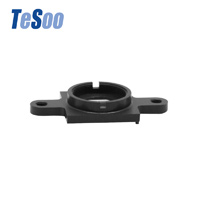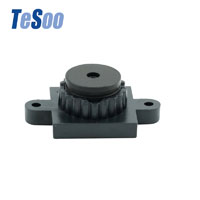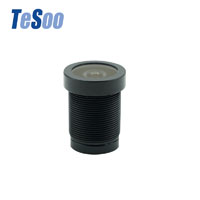Vehicle Lens: Safety-oriented with Constantly Upgraded Technology
Compared with consumer electronic cameras, the working environment of vehicle lenses is extremely harsh, such as vibration, high temperature, rain and fog, low temperature, and severe light changes, and the purpose of vehicle lens is to ensure the safety of driving. In each of the above working states, it is necessary to obtain stable, reliable and clear surrounding environment data. Therefore, with the improvement of automotive industry technology, the related performance requirements of vehicle lenses will become more stringent.
1. The vehicle lens eliminates stray lights and improves the stability of optical imaging
In order to control stray light caused by strong frontal light interference such as headlights, maintain optical imaging stability under conditions of extreme temperature or short-term rapid temperature difference changes, and effectively capture and distinguish object details, in addition to improving the algorithm from the software, automotive lens manufacturers are also actively promoting the overall technological progress of vehicle lens products by improving the coating process, improving technical parameters, and adding conductive heating films outside the lens.
Pixel upgrade: 800W pixel camera
For mainstream new energy car companies, 120W to 200W lenses are no longer sufficient for use, and the industry has begun to upgrade to 800W pixels.
Lens material: glass-plastic hybrid
At present, considering cost and performance, mainstream manufacturers of vehicle lenses are gradually starting to use glass-plastic hybrid lenses, and some high-end lenses use full-glass solutions.
Lens technology: aspherical lens
Aspherical camera lens has the advantages of miniaturization, light weight and good imaging effect, which has become the best solution for high-pixel vehicle lens.
Self-cleaning and anti-fog defrosting
At present, mainstream manufacturers will at least coat a hydrophobic coating on the surface of the lens of the car lens, which can effectively remove the dirt by means of water spray cleaning.
Anti-fog and defrosting: At present, there are two directions in the industry. One is by coating, the outer surface of the lens is coated with a hydrophobic film, and the inner surface of the lens is coated with a hydrophilic film; The second is to adopt a heating scheme, or the lens is heated as a whole, or a layer of transparent conductive film is made on the surface of the lens to achieve heating.
AA package
Vehicle lens assembly requires high-precision AA technology. The AA technology makes the relative position of the lens and the CMOS image sensor freely adjustable. It can also collect and analyze imaging data in real time, adjust the horizontal position and the tilt angle of the lens, so as to ensure the clarity of the image and ensure the focal point of the optical axis and the image plane is at the center of the image.
2. Night vision technology of vehicle lens
In order to ensure the safety of driving, the ADAS function of the car needs to be operated around the clock as much as possible. The camera realizes the perception of the surrounding environment through light sensing and algorithms. Therefore, in scenes with insufficient light, such as driving at night or passing through tunnels, the night vision capability of the camera needs to be enhanced. At present, automotive night vision systems can be divided into three categories according to imaging principles and lenses: low-light, near-infrared, and far-infrared.
3D sensing: Facial recognition and driver monitoring
At present, 3D sensing technology is mainly used in the interior of the cockpit. For example, in recent years, more and more attention has been paid to driver monitoring systems. In addition, the driver's identity can be determined through face recognition, and the cockpit can be adjusted according to personal usage habits, and even anti-theft functions can be implemented.
Human-computer interaction: Gesture control
The human-computer interaction function in the car is reflected in the face recognition, fatigue detection, gesture recognition, attention monitoring and driving behavior analysis realized by the built-in car camera. In the market environment where intelligent cockpits are gradually emerging, the market demand for vehicle lens with deep interaction capabilities will further increase.
Popular Camera Lens
Hot Camera Lens Articles

 English
English 

